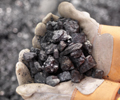

Momentum in the clean energy transition is rising worldwide despite the continuing effects of the coronavirus pandemic, an International Energy Agency analyst told the mining-focused MINEX Kazakhstan Forum.
This is because “the countries and companies that have announced pledges to reduce their GHG emissions to net-zero by the midcentury account for as much as 70% of the global GDP and emissions,” IEA analyst Tae-Yoon Kim told the forum Sept. 15.
Still, turning these pledges into action implies a massive acceleration in clean energy deployment; yet a clean energy system needs a lot more minerals and metals to build than the one fueled by hydrocarbons, the analyst said.
Falling short
The IEA said in a May report that by 2030, global lithium and cobalt supply could meet only half of their forecast demands, and copper production could fall 25% short of consumption. It said long lead times to develop projects and declining qualities of reserves compound a looming mismatch between the supply of critical energy transition minerals and climate ambitions.
Lithium, nickel, cobalt and manganese are vital for batteries, as are rare earths for wind turbines and electric vehicle motors. Large amounts of copper and aluminum are required for electricity networks and transmission lines. Solar panels are not mineral intensive, but the sheer scale of their future capacity means plenty of additional demand for copper, silicon and silver, according to Kim.
An electric car takes six times the mineral inputs of a conventional car — 210 kg/vehicle (463 lb) versus under 50 kg. An offshore wind plant requires 13 times more mineral resources than a gas-fired power plant — 15.5 mt versus 1.2 mt.
There is no shortage of mineral resources just yet, but there is no guarantee supplies will be available at the right price at the right time, Kim said, adding that recent price rises for cobalt, copper, lithium and nickel highlight how supply could struggle to keep pace with the world’s climate ambitions.
In 2020, clean energy technologies — the sum of uptakes by low-carbon power generation facilities, EVs and storage sector, electricity networks and hydrogen — consumed under 10 million mt of minerals. Their combined demand may jump to just under 30 million mt/year by 2040 under a sustainable development scenario or grow sixfold to 41 million mt if net-zero emissions target were to be achieved globally by 2050, according to the IEA forecast.
Battery metals demand
For some minerals, especially battery metals, a larger scale of demand growth is expected. IEA estimates project lithium seeing some 40 times demand growth over the next two decades, graphite consumption could see a 25 times spike, and uptakes of cobalt and nickel are expected to jump by 20 times each.
Demand for lithium is set to soar in excess of 2.5 million mt of lithium carbonate equivalent by 2030, a fivefold increase from 500,000 mt in 2020, while its production will not even triple, growing from 500,000 mt of LCE in 2020 to 1.2 million mt by the same year. The shortfall in cobalt supply versus demand could also widen into a large gulf by 2030, when demand is forecast to nearly triple, hitting 400,000 mt, up from 135,000 mt consumed in 2020. Cobalt production is expected to rise to 200,000 mt in 2030, up from from 140,000 mt last year.
Under the agency’s sustainable development scenario, committed mine production for copper is projected to grow between 2021 and 2025 to a peak of 23.5 million mt, up from 20.5 million mt in 2020, and then sink below 20 million mt by 2030. This is while primary demand is expected to continuously increase to top 25 million mt by 2030.
Price volatility
As increased knowledge and economies of scale have brought down other cost components, mineral inputs are claiming a larger share of the cost of clean energy technologies. Their price spikes and fluctuations will have an impact on upscaling investment requirements for climate change goals, Kim said.
The key issue with energy transition minerals is their geographical concentration — that level is much higher than that of oil or natural gas and presents a risk of price volatility and supply disruptions recurring more often as the world depends more on a low number of supplying regions.
Of global lithium production, 90% comes from Australia, Chile and China; 75% of rare earths come from China and the US; 80% of cobalt originates in the Democratic Republic of Congo, Russia and Australia; 55% of nickel is supplied by Indonesia, Philippines and Russia; and half of copper comes from Chile, Peru and China.
Where processing goes, the level of concentration is even more visible with China’s strong presence across the board: the country processes 40% of all copper, 35% of nickel, just under 60% of lithium, almost 65% of cobalt and 85% of all rare earths, according to the IEA.
Source: Platts